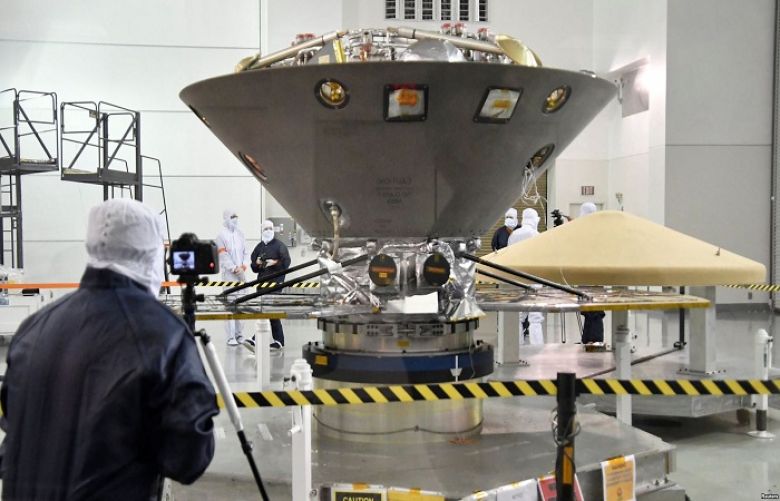After traveling hundreds of millions of miles through space, NASA's latest Mars probe will arrive Monday at the Red Planet.
Scientists have carefully chosen where they want the probe, called InSight, to land, selecting a large volcanic plain named Elysium Planitia. They say the site has few rocks and less chance of wind gusts that could potentially knock over the lander.
The spacecraft will take a crucial six minutes to enter Mars' atmosphere, descend and land. During that time, InSight will decelerate from an initial speed of 19,300 kmh (12,000 mph) down to just 8 kmh (5 mph) when it touches down. To aid the landing, scientists have equipped InSight with a parachute, descent thrusters and shock-absorbing legs.
If all goes well, InSight will make the eighth successful landing on Mars.
"My heart is beating inside of my chest like a drum," NASA project manager Tom Hoffman said Wednesday during a news conference about the planned landing.
Scientists say they are trying to determine whether the craft needs a small nudge to put it in the proper place for landing. Since InSight launched May 5, scientists have made four small tweaks to its path to ensure it arrives on target. Engineers were able to skip an additional nudge because the other maneuvers went so smoothly, and they say they might also be able to skip the final adjustment scheduled for Sunday.
By the time it lands, InSight will have traveled 484 million kilometers (300.7 million miles). However, once the lander is on the Martian surface, it cannot move, as it is not a rover. Scientists say it is critical that InSight land in the correct location, because wherever it lands is where it will stay.
NASA says the landing site has been particularly quiet in recent weeks, with few storms.
“We're expecting a very plain day on Mars for the landing, and we're very happy about that," said Rob Grover who is overseeing the landing phase.
Once landed, Insight has a unique mission to explore Mars' interior. While other missions have sought to better understand the planet's surface and atmosphere, this is the first to focus exclusively on what is under Mars' surface.
The $850 million InSight mission is planned to last about two years and will try to gather an array of information, including Mars' below-ground temperature and seismic activity, as well as to carry out an underground mapping project.
Insight is armed with a crane, heat probe and seismometer and is able to hammer 5 meters (16.4 feet) below the surface.
Scientists are hoping the mission will help answer questions about the composition and evolution of the planet and whether Mars was formed from the same mixture of materials as Earth.
Once InSight touches down, it will wait for 16 minutes to allow the dust that it kicked up to settle down again. Then it will deploy solar arrays, a critical step that will allow the lander to power itself for the next two years. InSight also has a battery system, but that will only last one day.
The lander is expected to touch down on Mars about 3 p.m. EST (2000 UTC) on Monday. Scientists hope to know quickly whether the landing was successful but say if communication with the spacecraft is delayed, they might not know InSight's status for several hours or even days.







